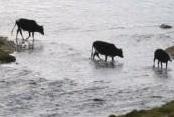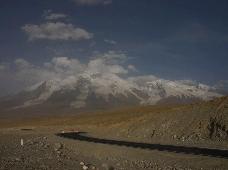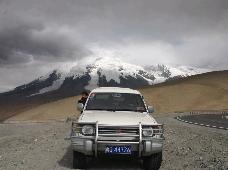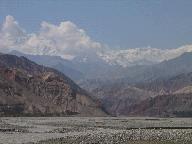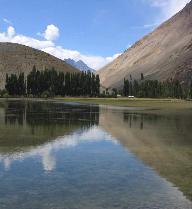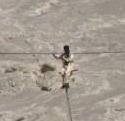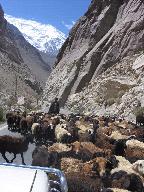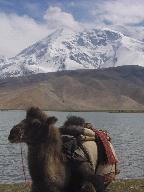|
The Pamir
Mountains are a mountain range in Central
Asia formed by the junction or knot of the Himalayas, Tian Shan,
Karakoram,
Kunlun, and Hindu Kush
ranges. They are among the world’s highest mountains and
since Victorian times they have been known as the "Roof of the World", translated from "Pamir". They are also known by the Chinese name of
Congling (Wade-Giles:
Ts'ung-ling) or "Onion
Range" (from the
wild onions growing in the region).
The precise
extent of the Pamir
Mountains is debatable. They lie mostly in Gorno-Badakhshan province, Tajikistan
and Badakshan Province, Afghanistan.
To the north they join the Tian Shan mountains along the Alay
Valley of Kyrgyzstan. To the south they join the Hindu Kush
mountains along the Wakhan Corridor in Afghanistan
and Pakistan.
To the east they may end on the Chinese border or extend to the range that
includes Kongur Tagh which is sometimes included in the Kunlun
Mountains.
Its three
highest mountains are Ismoil Somoni Peak (known from 1932–1962 as
Stalin Peak, and from 1962–1998 as Communism Peak), 7,495 m
(24,590 ft); Ibn Sina Peak (still unofficially known as Lenin Peak),
7,134 m (23,406 ft); and Peak Korzhenevskaya (Russian:
Pik Korzhenevskoi), 7,105 m (23,310 ft).
There are many glaciers in the
Pamir Mountains, including the 77 km (48 mi) long Fedchenko Glacier, the longest in the former USSR
and the longest glacier outside the Polar
region.
Historically,
the Pamir Mountains
were considered a strategic trade route between Kashgar and Kokand on the Northern Silk Road and have been subject to
numerous territorial conquests. The Northern Silk Road (about 2,600 km
(1,616 mi) in length) connected the ancient Chinese capital of Xian to the west over
the Pamir Mountains
to emerge in Kashgar
before linking to ancient Parthia. In the 20th century, they have been the setting
for Tajikistan Civil War, border disputes
between China and Soviet Union,
establishment of US, Russian, and Indian military bases, and renewed interest
in trade development and resource exploration.
KJTI journey through Pamir
Mountains when you travel from Pakistan to China. You will leave the green and vertical
valleys of the Karakorums in North Pakistan to cross the highest
international border in the world and enter the surreal high plateaus of the
Kunlun Shan mountain ranges with their own 25,000ft giants. Further on,
you will finally leave the mountains behind you and reach the edge of the
infamous Taklamakan Desert –
half a million square kilometres of sandy
desolation. You will reach the city of Kashgar ( Kashi ) - literally an oasis on the
silk road, 4000km west of Beijing
and famed for an ancient Sunday market tradition that stretches back
thousands of years. You will leave the Pushtuns, Afghans, Kalasha,
Baltis and Hunzakuts of North Pakistan, for the Uighurs, Tajiks, Kyrgyz,
Kazak and Han of Western China. In short, by making this journey, you
will discover two regions, both full of astonishing scenery, both melting
pots of cultural diversity, both quintessentially Central Asian.
(Some information and links sourced from
Wikipedia)
Adventure Travel in North Pakistan
http://www.kjti.co.uk/
|
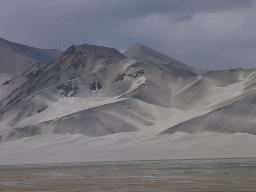
|

